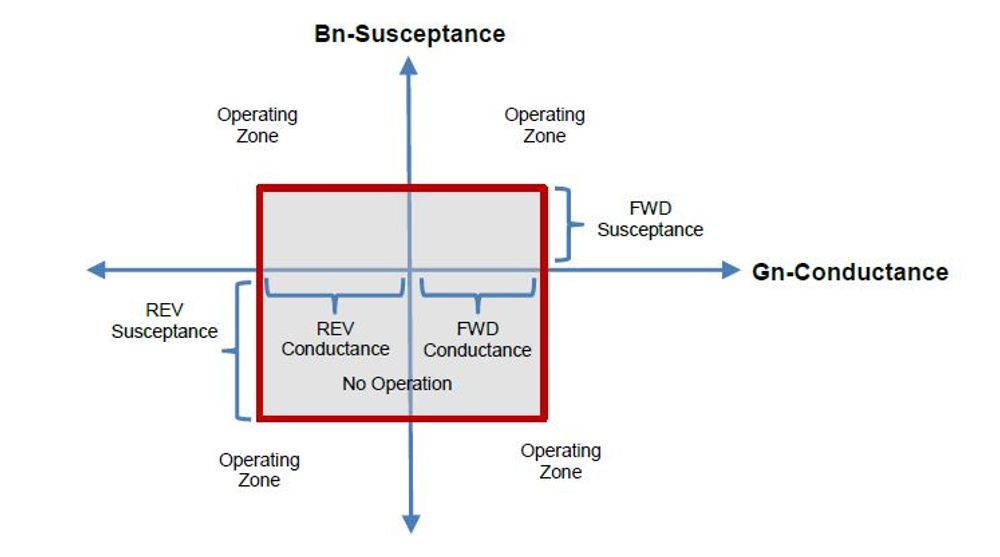Technical Article
Updated 03/2023
The Distribution Network Solution to High Impedance Fault Detection
NOJA Power Unveils new Admittance Protection Capability for their OSM Series Reclosers.

NOJA Power releases new Admittance Protection for its suite of OSM Reclosers with RC-10 Control. Admittance Protection provides engineers with greatly increased capability to detect high impedance earth faults, providing an alternative solution to achieve higher sensitivity than offered by conventional earth fault protection.
This new protection suite is available to all users of the RC-10 controller by means of a firmware update and is accomplished through evaluating the neutral admittance characteristics of the feeders connected to the recloser. This added functionality increases recloser protection sensitivity particularly in compensated and high resistance earthed networks, where resistive earth leakage current is typically below reasonable protection pickup levels. Through examining the real and reactive components of the neutral admittance it is possible to set designated protection zones for reclosers, providing added sensitivity and reliability for all installations.
Over the last few decades, the popularity of solidly earthed network design has seen a general decline. The primary motivation for this decline is that earth faults on solidly earthed networks have characteristically have high earth fault currents. Despite the reduced safety of high earth faults, the greater earth fault magnitude implies that relays connected to this network will see a marked increase in neutral current under fault conditions. This made earth fault protection relaying very easy.
However, considering the implications for network security, safety and bushfire risk, it is often advantageous to implement schemes to limit the earth fault current on a feeder. There are multiple techniques available for achieving earth fault reduction, from high impedance earthing through to Petersen Coils and active compensation. When implementing earth fault limiting techniques, often the earth fault levels are driven below detection levels for conventional relays and additional techniques are required to detect the presence of a fault.
This reduction in earth fault magnitude implies that protection engineers need to use new methods to detect earth faults with enough sensitivity in high impedance networks. The answer to this challenge is admittance protection.
In simple terms, admittance protection is a measurement of "how easy is it for current to escape from the load system". The higher the reading of neutral admittance, the easier it is for current to escape from the desired load circuit. By setting a limit for how high this value can reach, admittance protection provides an algorithm upon which to trip even when earth fault current may be low. Impedance to earth decreases in an earth fault situation, which is contradictory to most other protection elements, whilst conversely admittance to earth increases. Most protection elements trip when a metric of a network becomes too high (too much current, too much voltage etc), hence admittance is easier to calculate and comprehend from a network protection perspective. Simply as the fault becomes more severe, admittance also increases. By setting a limit on how high this admittance value reaches, we can provide protection to earth faults even when the individual voltage or current deviations are small. This is why admittance protection is invaluable for high impedance networks or protection of lines with low earth fault current.

In reality the earth fault is a combination of reactive effects (capacitive line charge and inductance of lines/earthing) and the resistive component (conventional current flow through the fault site and returned through the earthing of the upstream transformer). By examining each of these effects in isolation, it is possible to infer the presence of a fault, even when at face value individual earth fault components seem small. The added benefit of using this technique is associated with the polarity of the vectors, as admittance components can be determined on a direction basis as a result of the sign of the value. Therefore, directional earth fault protection can be achieved through use of admittance protection as well. Figure 1 demonstrates an example of using ranges of acceptable conductance and susceptance values, with protection operating as soon as the magnitude in either the forward or reverse directions exceeds the calculated limits of neutral admittance.
Admittance protection has traditionally only been available at Transmission level voltages. With the improvements of network voltage stability and balance on distribution networks, it has been possible to begin to use admittance characteristics as a more precise method of detecting faults. The NOJA Power RC-10's latest implementation of admittance protection provides accessibility to transmission tier protection in a distribution network environment, providing greater sensitivity and effectiveness of protection implementation.
Distribution networks globally are evolving to offer higher levels of security, safety and risk management. Whilst traditional solidly earthed networks generate high fault currents they allow for simplified protection schemes to be developed. The risk of these high fault currents is seeing our distribution utility customers globally implement high impedance earthing systems that require more complex protection due to limiting fault currents and admittance protection is one of the solutions we now provided for these systems.
Admittance protection is the ideal protection relaying solution for networks with high impedance, compensated neutral or unearthed networks. By utilising the built in voltage and current sensing within the NOJA Power OSM, admittance protection has been achieved to provide greater sensitivity to earth faults. In an era where network efficiency and precision of protection for bushfire mitigation is paramount, admittance protection provides a cost effective solution for detection of earth faults where greater sensitivity and accuracy is required.
Want to stay up to date with Electrical Distribution Technology?
Join our list for a free weekly technical bulletin, as we share our Global Electrical Engineering experience directly to your inbox.
Subscribe →